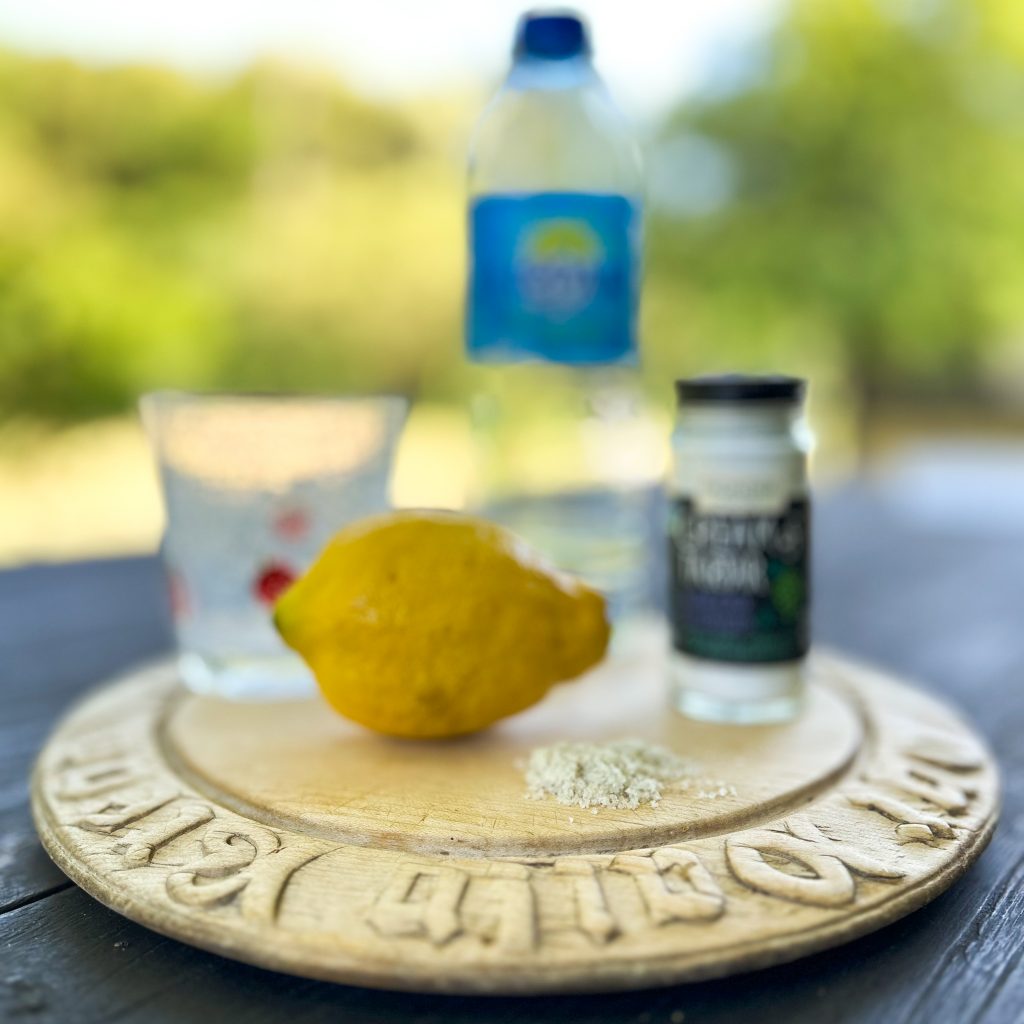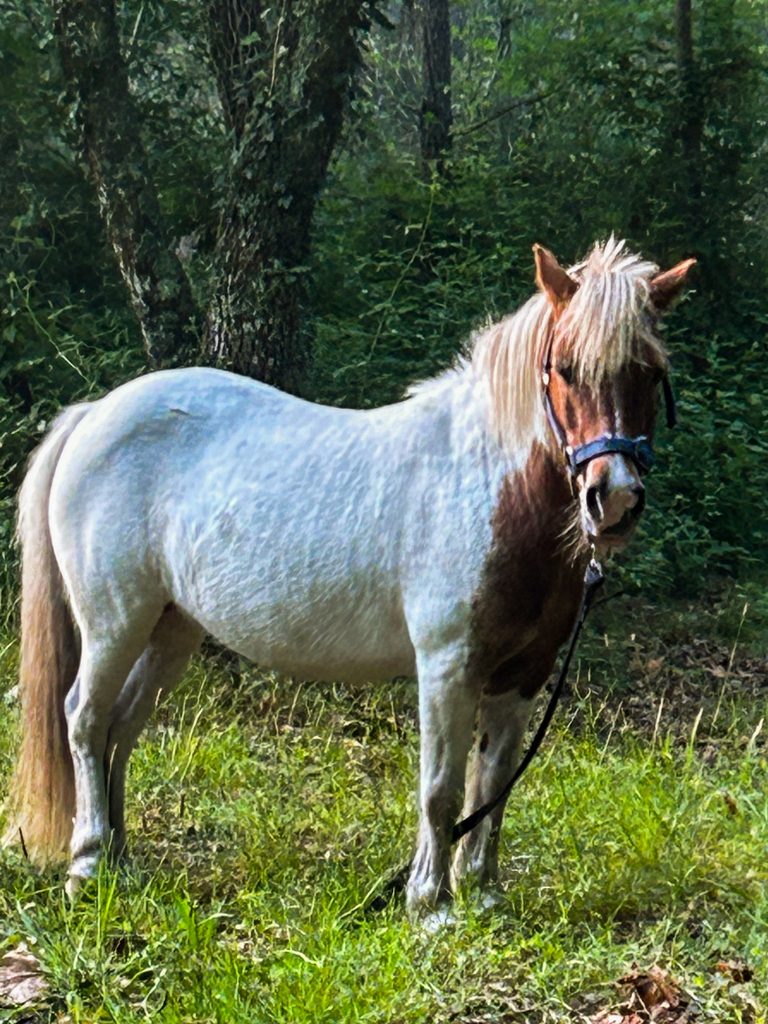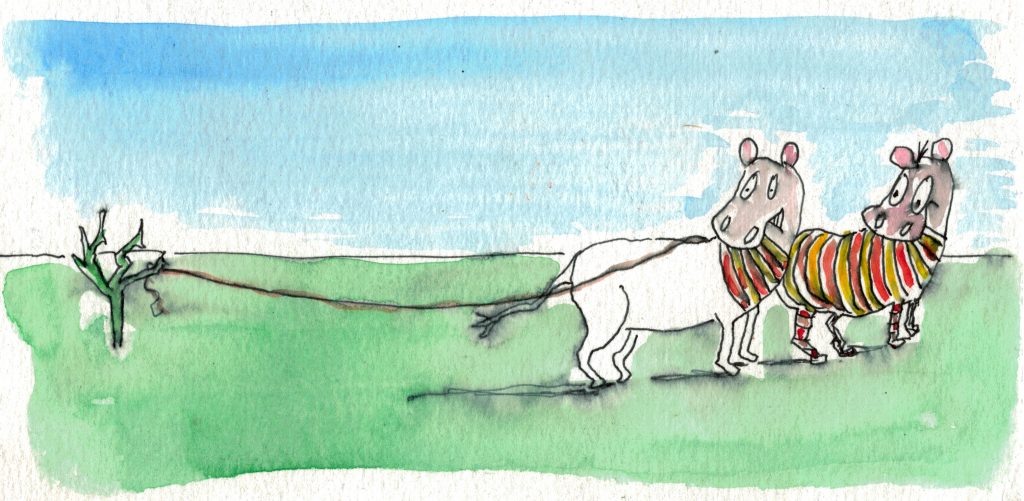-
Adrenal cocktail, electrolytes, and an abundance of visitors

Adrenal cocktail ingredients I was woken up very early this morning — it was barely light — to the horses galloping back and forth like savages on crack cocaine. They’re usually fairly calm at night, so I knew something was up. I looked out of the window to see what was causing the commotion, to discover this little minx, no bigger than a large dog, staring into the bedroom window:

The night visitor at sunrise He was not easy to catch, despite the halter and trailing lead rope, but I eventually managed with a bucket of oats and my fluent pony chat. After a couple of early morning phone calls, I managed to track down the owner who said that he must have broken out of his field overnight, and that it would have been quite an adventure for him, as he’d never seen ‘big horses’ before!
Barn owls and turtle doves
The baby barn owls are enormous and flying around the attic of our grange as if they owned the place, which I suppose they do now. The parents seem to have done a runner, or flyer, because they appear to be being fed by our four pigeons. Unfortunately they’re not easy to photograph because they get agitated and buzz the camera.
There are also two baby turtle doves nesting in the wisteria on our terrace. Ten years ago, Léo found an abandoned turtle dove under one of our oak trees. He took great care of her until she grew strong enough to fly away. When she left, I was so sad that I imagined her coming back to see us every year. Maybe this is her? Maybe she has happy memories of eating couscous, and drinking almond milk on our terrace, under the wisteria, which is why she decided to entrust us with her babies? I’m sure that’s it.

Baby turtle doves in their nest I drink a big glass of electrolytes every morning before eating to set me up for the day. This morning, after all the running around and pony coercion, I took a double measure.
Essential electrolytes
Electrolytes are minerals that carry an electric charge when dissolved in liquid. The main electrolytes, found in blood, lymph, urine and sweat, are: potassium, magnesium, calcium, sodium, phosphate, chloride and bicarbonates.
The electric charge electrolytes provide is vital for proper functions in the body. These include nerve and muscle function, cardiac rate and rhythm, moving nutrients and waste as well as regulating blood pressure. Electrolytes also maintain optimal fluid balance in the body and proper pH levels in the tissues and bodily fluids. Our bodies are about 60% water, so this is of utmost importance.
Symptoms of an electrolyte imbalance include fatigue, headache, nausea, muscle cramps or spasms, heart arrythmia, changing blood pressure, numbness or tingling in the fingers or toes, irritability and confusion.
There are many variations of this ‘cocktail’. For example you could use fresh orange juice instead of lemon juice and maybe add some magnesium powder. It is great taken first thing in the morning, but also as a pick-me-up in the late afternoon.
Recipe for adrenal cocktail (serves 1)
- 1/2 lemon, freshly squeezed
- Glass of Coconut water
- 1/2 teaspoon sea salt (or Himalyan salt)
- 1/2 teaspoon cream of tartare
Combine the ingredients and drink!
-
May: Ehlers Danlos Syndrome awareness month

The zebra is the symbol of Ehlers-Danlos syndrome because ‘sometimes when you hear hoofbeats, it really is a zebra’. May is Ehlers Danlos Syndrome awareness month. Ehlers Danlos Syndrome (EDS) is a group of disorders of the connective tissues. Connective tissue is found throughout the body, so the whole body can be affected due to defects in the structure and biosynthesis of collagen. There are 13 subtypes of EDS, but the most common is Hypermobile EDS (or hEDS), which is the type I have. Dysautonomia and MCAS (mast cell activation syndrome) are common comorbidities; I have both, having hit the trifecta jackpot!
Symptoms
The main symptoms of hEDS are pain, fatigue, allergies, gastric issues, joint laxity, muscular pain, stretchy skin, dizziness, brain fog, problems with proprioception, migraines, ADHD… In my case, this translates as: Countless fractures, sprains and dislocations; constantly walking into door frames; being able to spot someone wearing perfume from 500 meters, and a brain so distracted that thirty tabs are open, lights are flashing, and the music is on full blast at any one time. I also faint if I have to stand still for any length of time, which makes for great fun at border control! (I’m really selling myself here ;-))
I was diagnosed in with hEDS in late 2021, after The Vaccine exacerbated my symptoms to a point where I could no longer ignore them. Good nutrition is absolutely paramount to managing Ehlers Danlos, as so many of the complications are of a gastrointestinal and allergic nature. Bearing in mind that the aim is to reduce immune reactions, normalise gut bacteria and support digestion, absorption and metabolism, it’s best to limit sugar and refined carbohydrates, keep processed foods to an absolute minimum and consider cutting out gluten.
Exercise is also key, and luckily for me, riding is especially beneficial. Things like yoga, walking, cycling and swimming are also very helpful, although I have to be careful with yoga as I’m very prone to subluxations of the hips and shoulders.
